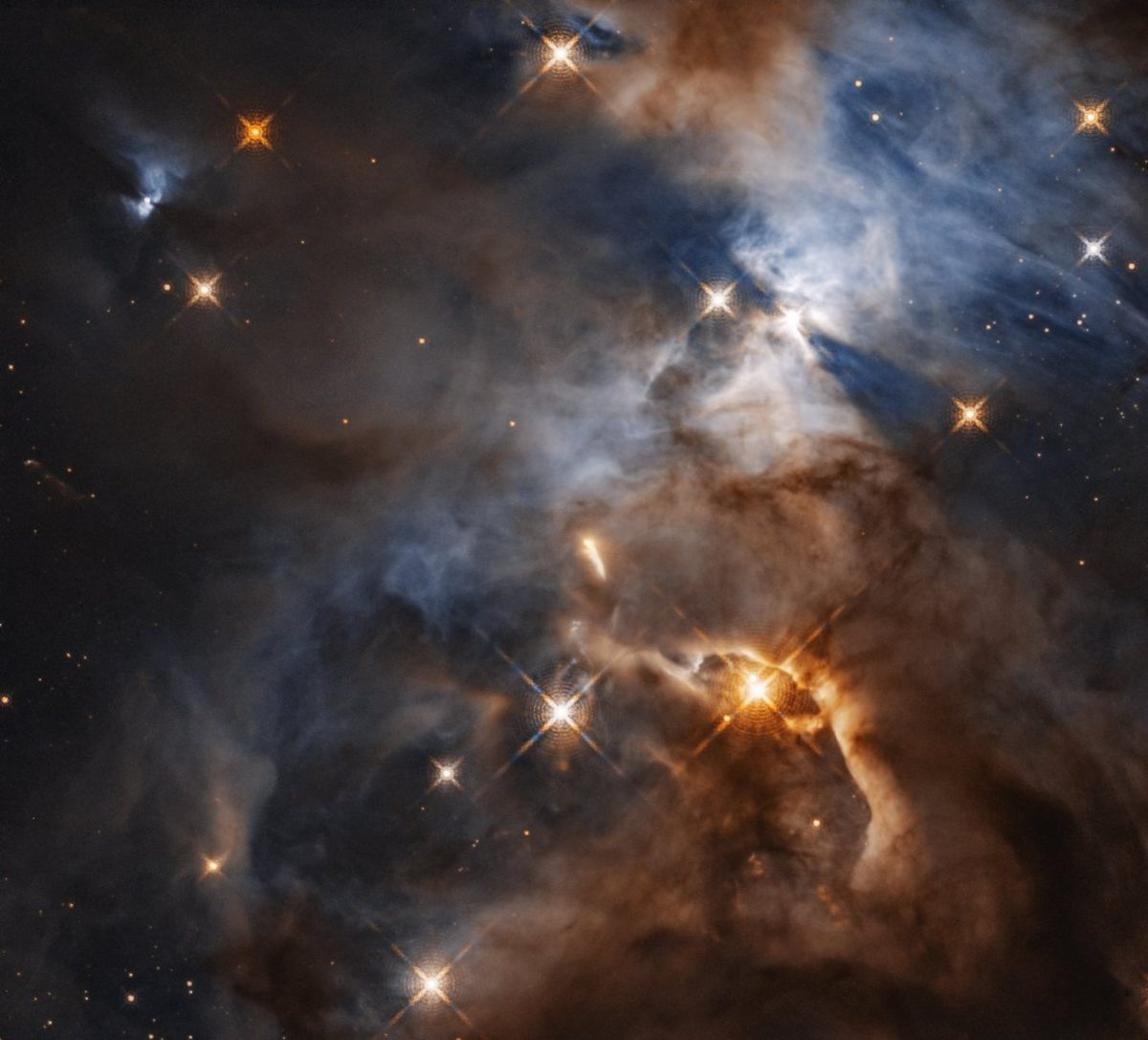The Cosmos with HBC 672
Shadows on Earth can be mysterious and foreboding, but when they occur in space, they can convey information we otherwise could not know. In a stellar nursery called the Serpens Nebula, nearly 1,300 light-years away, a young star’s game of shadow play is revealing secrets of its unseen planet-forming disk. The near-infrared vision of NASA’s Hubble Space Telescope captured the shadow cast by the fledgling star’s brilliant light being blocked by this disk.
Named HBC 672, this Sun-like star is surrounded by a debris ring of dust, rock, and ice—a disk that is too small and too distant to be seen, even by Hubble. But like a little fly that wanders into the beam of a flashlight shining on a wall, its shadow is projected large upon the cloud in which it was born.
In this Hubble image, the feature—nicknamed the “Bat Shadow”—spans approximately 200 times the length of our solar system. It is visible in the upper right portion of the picture. …
The presence of a shadow means that the disk is being viewed nearly edge-on. This is something that could not otherwise be known because of the disk’s great distance from us, which makes it too small to be seen by Hubble.
The disk’s shadow is similar to what is produced by a cylindrical lamp shade. Light escapes from the top and bottom of the shade, but along its circumference, dark cones of shadow form. Although the disk that gives rise to the shadow is a common object around young stars, the combination of an edge-on viewing angle and the surrounding nebula is rare. …
